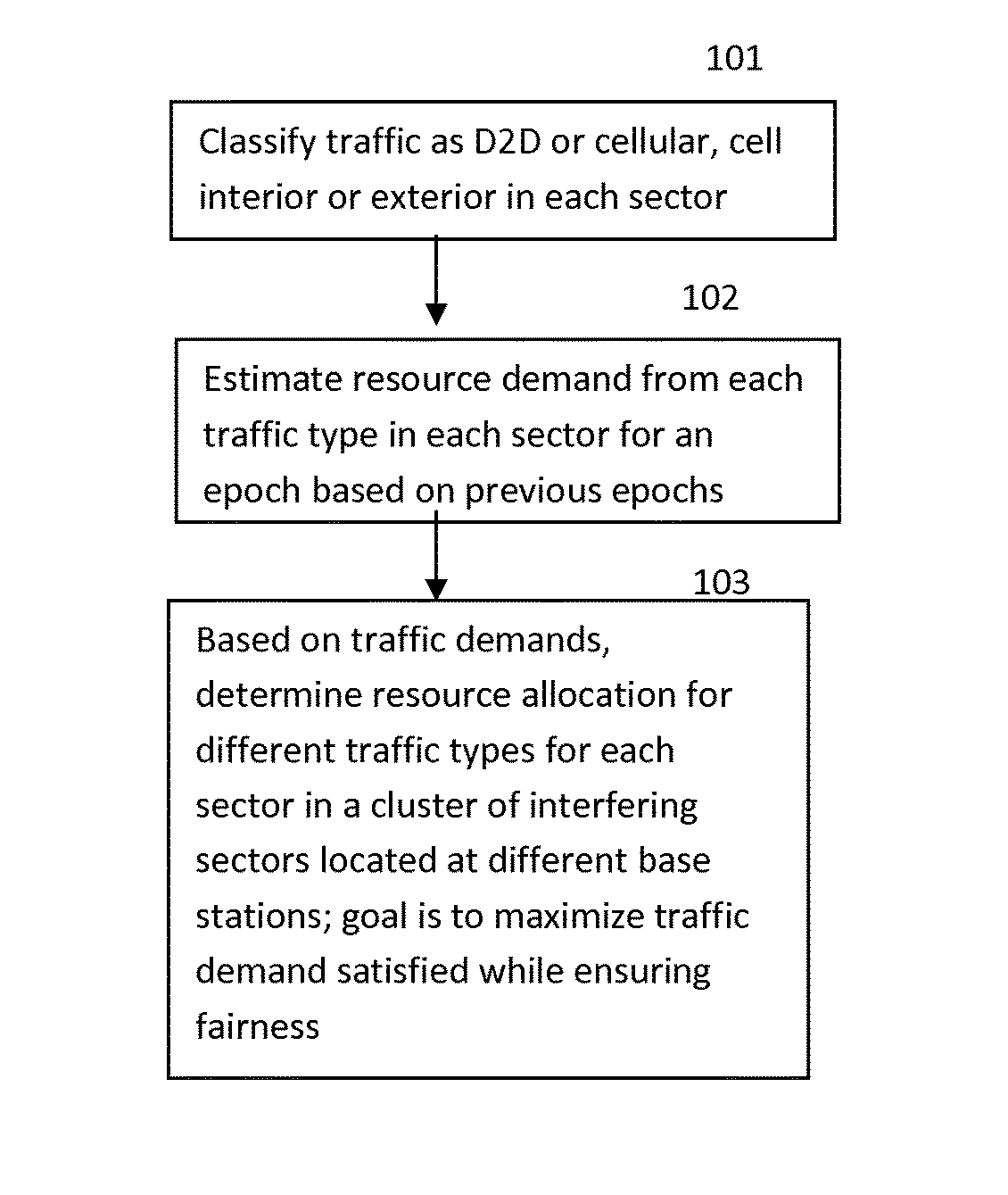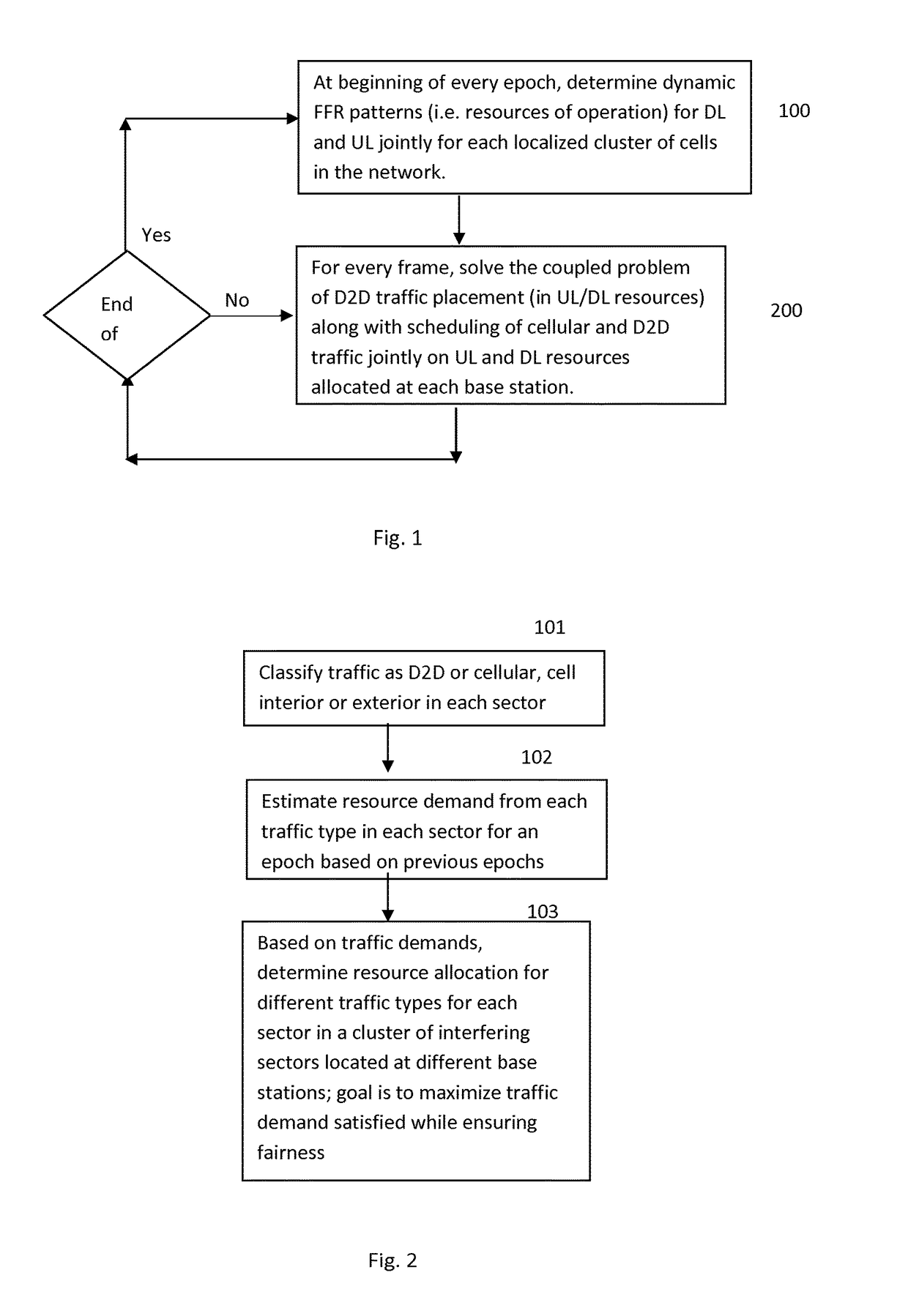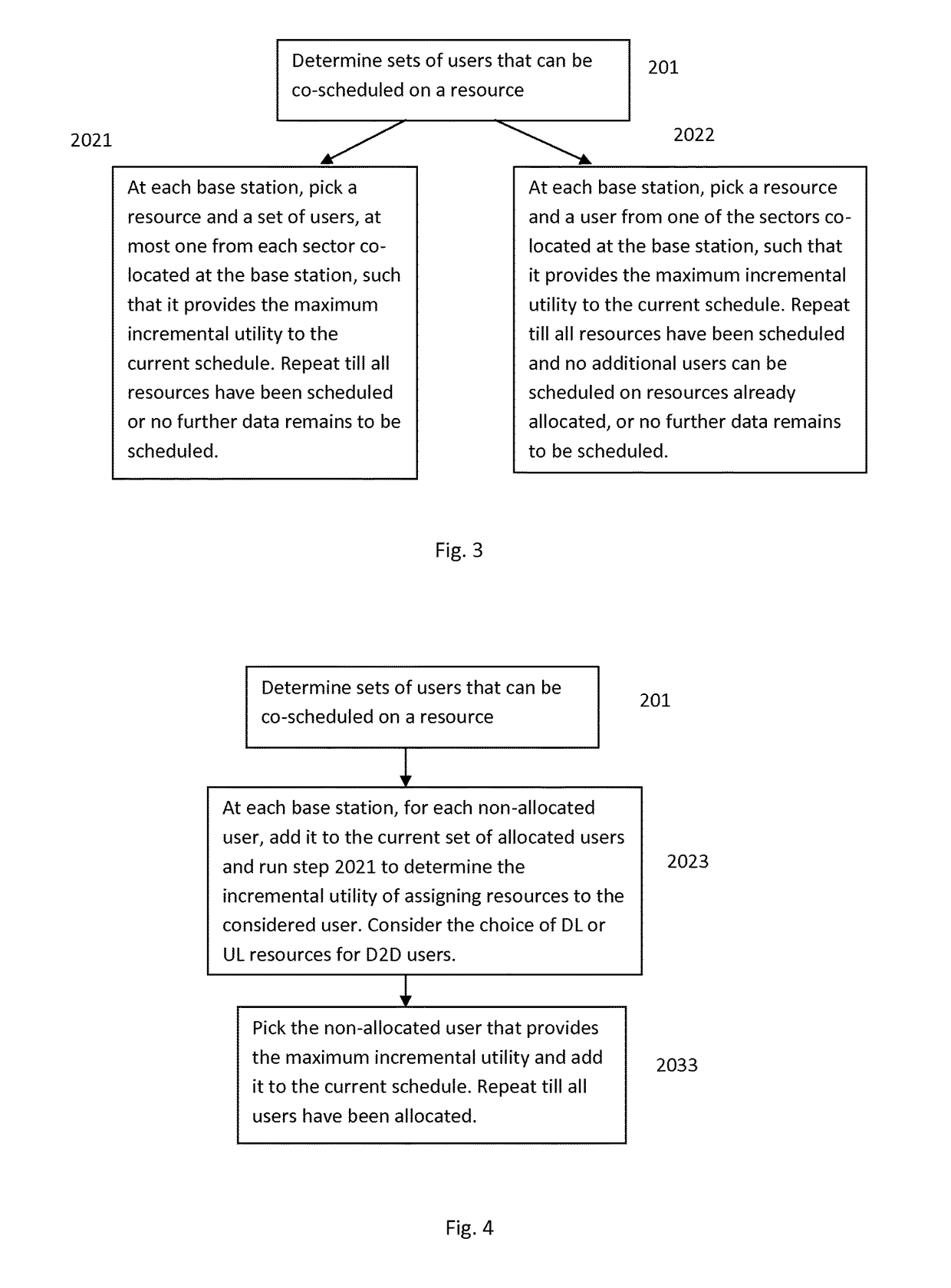Resource management with device-device communication in next generation cellular networks
a resource management and device technology, applied in the field of communication in cellular networks, can solve the problems of d2d's ability to improve resource utilization, no solution for managing wireless spectral resources, and scalability problems
- Summary
- Abstract
- Description
- Claims
- Application Information
AI Technical Summary
Benefits of technology
Problems solved by technology
Method used
Image
Examples
Embodiment Construction
[0014]The present invention is directed to a radio resource management (RRM) with device-to-device (D2D) communication (R2D2) solution that provides for efficient, scalable resource management in cellular networks by leveraging D2D communication capability in both TDD (time division duplexing) and FDD (frequency division duplexing) systems. It operates at two time scales. At the beginning of every epoch (lasting several tens of frames), R2D2 estimates the average traffic (resource) demand from cellular and D2D traffic in each sector in either directions (downlink, DL and uplink, UL) based on history (from previous epochs). It partitions the network into disjoint (small) clusters of interfering sectors (called cross sectors) and leverages the flexible nature of D2D traffic to determine the dynamic FFR patterns for DL and UL jointly for each of these clusters in a completely distributed and localized manner. Based on the dynamic FFR pattern determined, the resources of operation are d...
PUM
 Login to View More
Login to View More Abstract
Description
Claims
Application Information
 Login to View More
Login to View More - R&D
- Intellectual Property
- Life Sciences
- Materials
- Tech Scout
- Unparalleled Data Quality
- Higher Quality Content
- 60% Fewer Hallucinations
Browse by: Latest US Patents, China's latest patents, Technical Efficacy Thesaurus, Application Domain, Technology Topic, Popular Technical Reports.
© 2025 PatSnap. All rights reserved.Legal|Privacy policy|Modern Slavery Act Transparency Statement|Sitemap|About US| Contact US: help@patsnap.com



